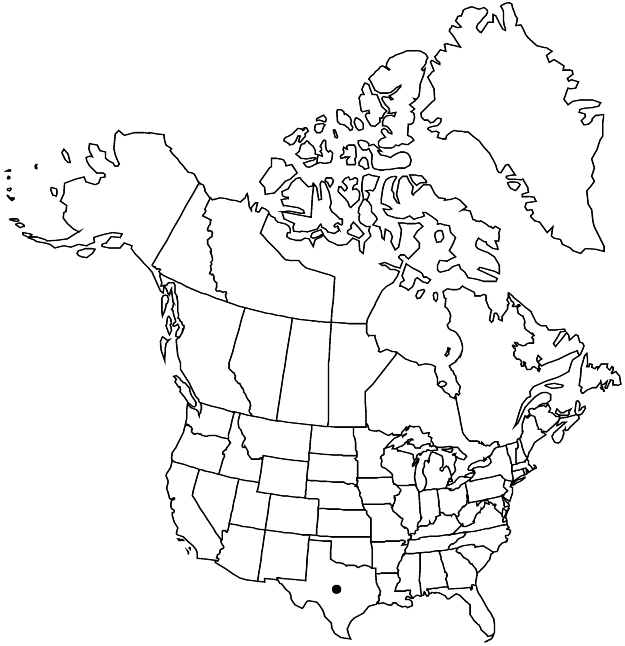Paronychia jonesii
Wrightia 2: 250. 1963.
Plants annual; taproot slender. Stems prostrate, sprawling-spreading, much-branched, 10–35 cm, short-pubescent. Leaves: stipules ovate, 3–7.5 mm, apex acuminate, entire; blade oblanceolate to spatulate, 5–18 × 1.5–3.5 mm, leathery, apex obtuse to very short-cuspidate, densely appressed-pubescent. Cymes terminal and subterminal, occasionally axillary, 3–7-flowered, congested, clusters 3–8 mm wide. Flowers 5-merous, ± extended-urceolate, with enlarged hypanthium and calyx constricted proximally, flaring distally, 1.8–2 mm, pubescent with short, hooked hairs proximally; sepals red-brown, often finely striped or mottled, veins absent, spatulate-obovate to suboblong, 0.8–1.3 mm, leathery to rigid, margins white, 0.1–0.2 mm wide, papery, apex terminated by awn, broadly rounded, awn divergent, 0.3–0.4 mm, broadly conic in proximal 1/3–1/2 with white, scabrous spine; staminodes filiform, 0.5–0.6 mm; style 1, 0.7–0.8 mm, cleft in distal 1/5. Utricles globose, 0.8–1 mm, smooth, glabrous.
Phenology: Flowering spring–summer.
Habitat: Sandy, open grounds
Elevation: 10-40 m
Discussion
Paronychia jonesii most closely resembles P. drummondii and is known only from southeastern coastal Texas.
Selected References
None.
